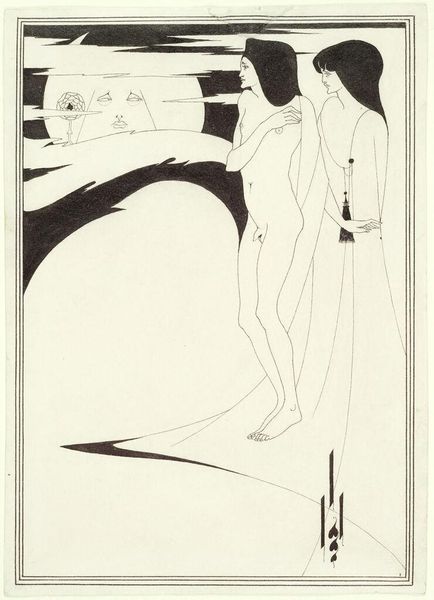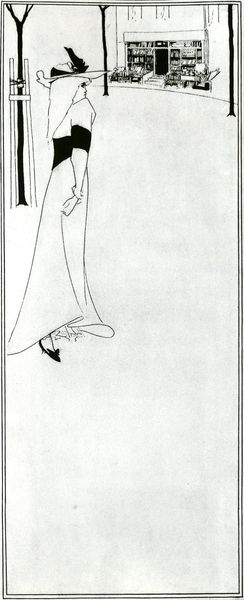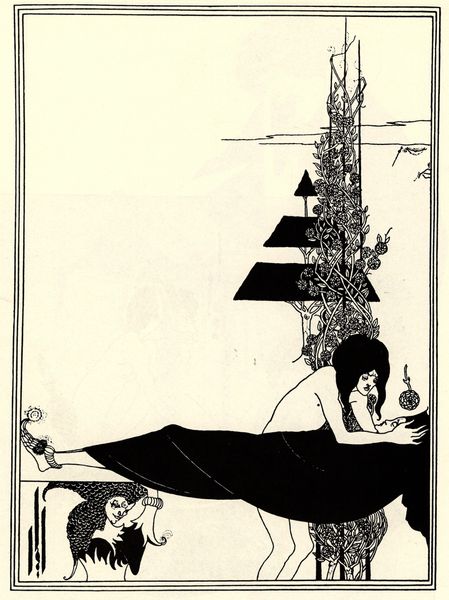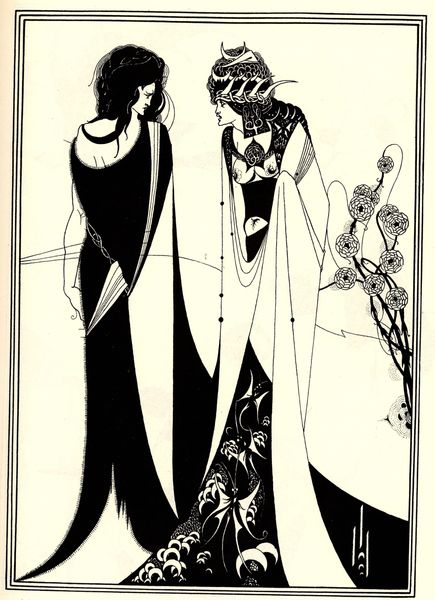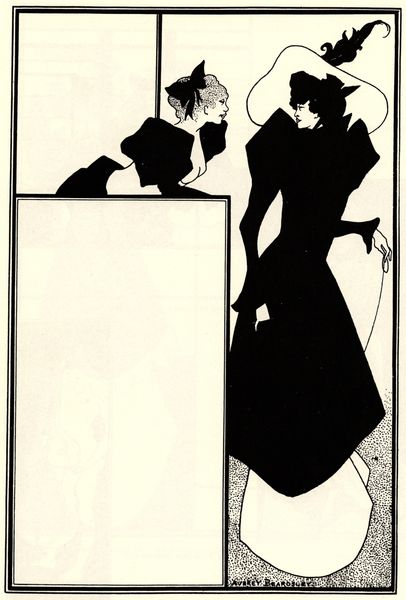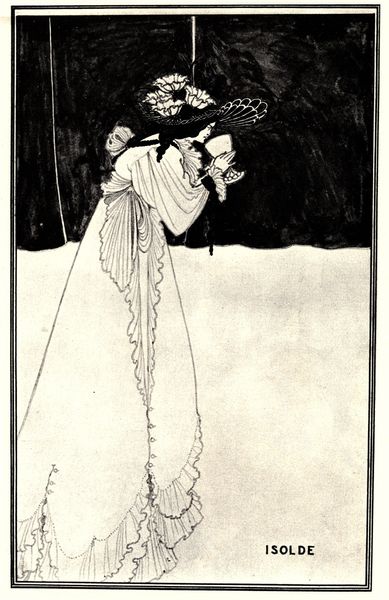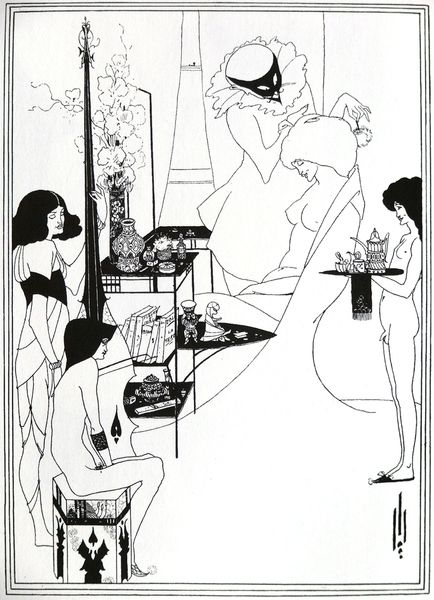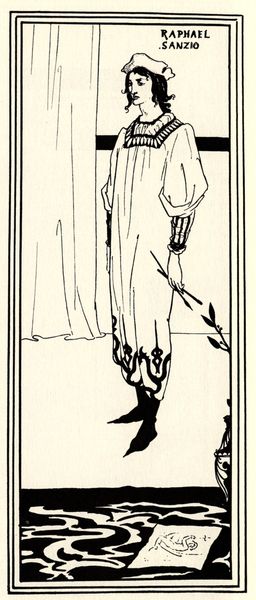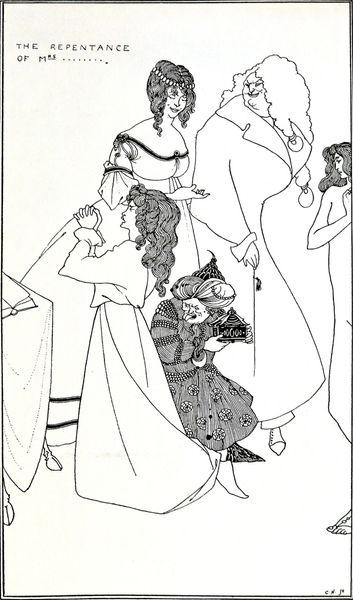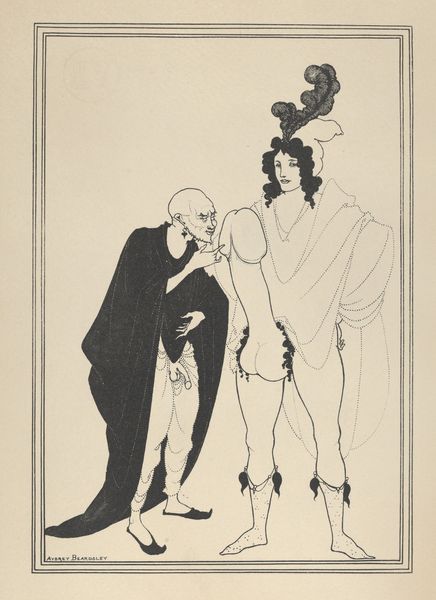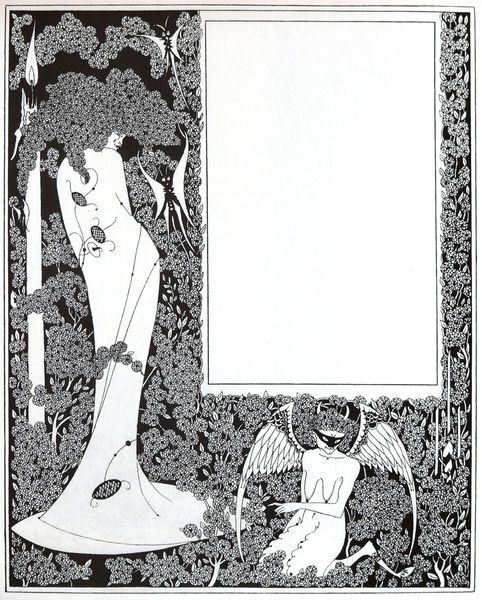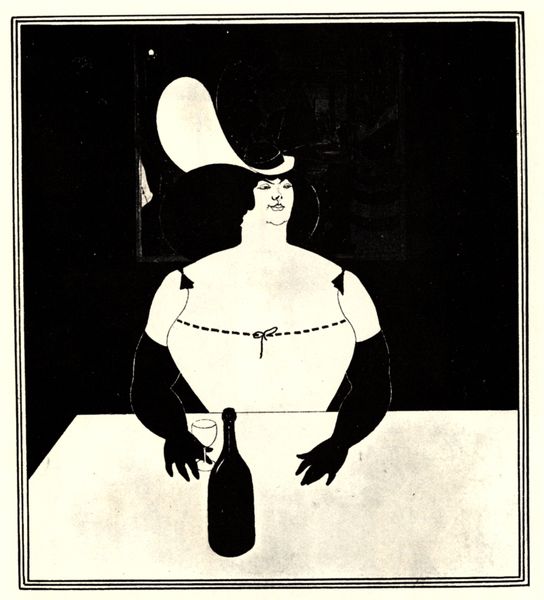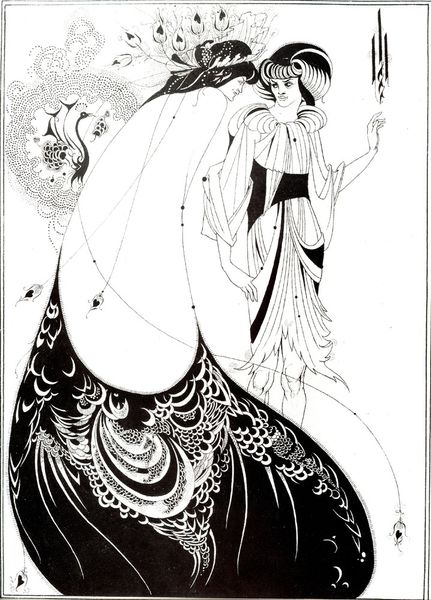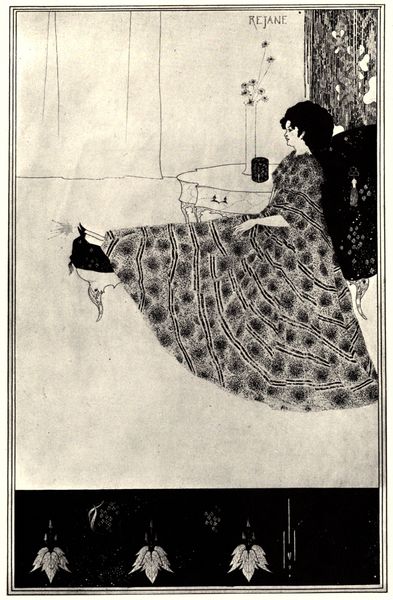
drawing, ink
#
drawing
#
pen illustration
#
figuration
#
ink line art
#
ink
#
symbolism
#
nude
#
erotic-art
Copyright: Public domain
Curator: "The Woman in the Moon," a pen and ink drawing by Aubrey Beardsley, created in 1894...it certainly makes a statement with its stark contrast. What grabs your attention initially? Editor: Well, it's strikingly different, especially how Beardsley uses the negative space. I'm curious about the production of such graphic works; What impact did advancements in printing techniques have on Beardsley’s style and his subject matter? Curator: That's an excellent question. The rise of mass-produced print media, like magazines and posters, significantly shaped Beardsley’s aesthetic. His clean, bold lines and the high contrast you noticed? That was easily reproduced in cheap printing processes, reaching a broad audience. It democratized art consumption in a way. The erotic themes you observe also gain greater reach. Do you think such material had an immediate or slow burning influence on the period's aesthetic? Editor: I suppose immediate in a way. It could rapidly impact tastes with each edition hitting newsstands and being displayed publicly, no? Though surely its lingering effects had further significance for challenging established aesthetics or sexual prudery. It seems rebellious in a mass market. Curator: Precisely! It allowed artists to circumvent traditional gatekeepers like galleries. What labor underpinned this widespread availability of images like “The Woman in the Moon”? Think about the ink production, the papermaking, the printing presses…all these layers of industry facilitating Beardsley’s art reaching a Victorian audience. What about the consumer, or buyer? Do you feel it speaks more about creation or ownership? Editor: Hmm. I think I see how understanding the means of production adds another layer to appreciating his art. The very availability influences meaning. Curator: Indeed. The accessibility is fundamental to its radical impact, democratizing art even if unintentionally. Now I wonder, were the distributors more important to challenging norms than the art itself? Editor: That gives me something to consider, and to challenge. Thank you!
Comments
No comments
Be the first to comment and join the conversation on the ultimate creative platform.
